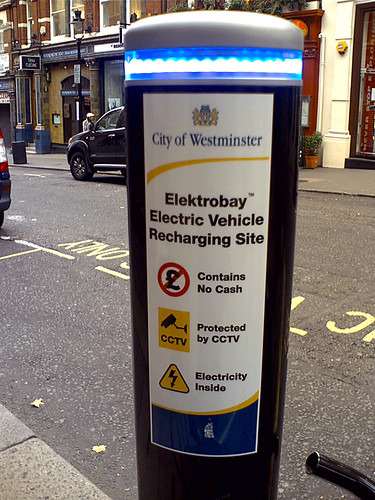Dick Messer is paying a pretty good price these days to fuel his drive from Riverside to work: the equivalent of about $1.35 a gallon. But Messer, who has collected, restored and raced gasoline-powered cars for more than 50 years, isn’t commuting on gasoline anymore to his job running the Petersen Automotive Museum in the mid-Wilshire area of Los Angeles.
Messer still owns such classic rides as a 1963 Lincoln Continental, a 1953 Cadillac Fleetwood and a Saleen Mustang. Yet the only car Messer wants to talk about is the $24,000 Honda Civic GX that runs on compressed natural gas, which he bought in February 2008 as gasoline prices rose toward a July peak above $4 a gallon.
“I can get to the museum from my home in Riverside and back on one tank easily,” driving alone in the carpool lane, Messer said. “I pay $1.35 a gallon to fill it up, and the price is capped at $1.99 a gallon. I’ll never have to pay more than that. No matter what happens to the price of gasoline.”
Messer is hardly alone in his aversion to steep gas prices. California drivers appear to believe that gasoline shouldn’t cost more than $2 a gallon, and they have been proving it for nearly three years.
Gasoline consumption in California began falling in April 2006, and for 11 straight calendar quarters dropped below gas use in the year-earlier period even though the state added 790,000 new licensed drivers. First-quarter gasoline use hasn’t yet been released by the California State Board of Equalization, which on Thursday said Californians consumed 1.21 billion gallons of gasoline in January, down 22 million gallons, or 1.8%, from the previous January.
Agency statistics show the pattern began between January and September 2005, when the average gas price climbed from $1.96 to $3.06.
That was California’s first brush with $3-a-gallon gas. It lasted just two weeks in 2005, according to the Energy Department’s weekly survey of filling stations, but it was long enough to trigger behavior changes.
For all of 2005, gasoline consumption rose by just 30 million gallons to 15.95 billion gallons, according to the state equalization board, which gathers the numbers from taxes paid by fuel distributors. The pace was well off the boom years from 2000 to 2004, when gas use grew by an average of 343 million gallons a year.
“The tipping point is $2,” said Amy Myers Jaffe, senior energy analyst at Rice University’s James A. Baker III Institute for Public Policy in Houston. “People start to respond to fuel prices and make changes at $2 a gallon. At $3 a gallon, it becomes noticeable. It really gains in momentum. The longer the price stays higher than $3, the deeper and more lasting the structural changes.”
In 2007, with gasoline prices above $3 a gallon for 34 weeks, California consumption fell 270 million gallons below 2005 levels. In 2008, with gasoline topping $4.58 a gallon in July and the depth of the nation’s economic crisis beginning to sink in, Californians used 910 million fewer gallons than they did in 2005.
Messer turned to a different fuel. Stephen Stone of Norwalk bought an all-electric Zap Xebra. Robert Cruz of Oxnard went back to a 1970 Volkswagen because it got better mileage than anything else he’s driven. Alan Thomas of Oxnard adds a few gallons of transmission fluid to his tank to cut fuel costs.
“Sometimes I just used to go out and take a drive,” Thomas said. “When was the last time you heard anyone say, ‘I’m going out for a drive’? I don’t drive any more than I have to now.”
Millions of other Americans also are parking more. A 2008 Brookings Institution report called “The Road . . . Less Traveled” found that “consistent annual growth” in vehicle miles traveled in the U.S. leveled off in 2004. By 2007, miles driven declined for the first time since 1980 and at the fastest rate since the end of World War II, said Robert Puentes, senior fellow at Brookings’ metropolitan policy program and a co-author of the report.
“Americans have simply been driving less. . . . At the same time driving has declined, transit use is at its highest level since the 1950s, and Amtrak ridership just set an annual ridership record in 2008,” Puentes wrote.
Some experts say Americans are far less likely to accept high fuel prices than their European counterparts.
In the U.S., “we have always had cheap gasoline for the most part and most Americans don’t feel like they have that much of an alternative,” said Bruce Bullock, director of the Maguire Energy Institute at Southern Methodist University in Dallas. “The higher prices go here, the more people feel like they are being taken for a ride.”
Another factor in changed driving behavior is anger, said Suzanne Shu, an assistant professor of marketing at the UCLA Anderson School of Business. Price surges in other consumer items, such as milk, tend to get lost in larger grocery bills. But buying gas is often a trip of its own, and the price is “in your face, almost every block,” Shu said.











